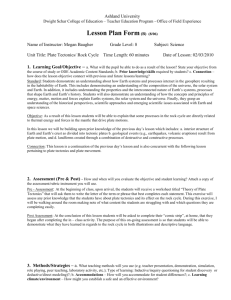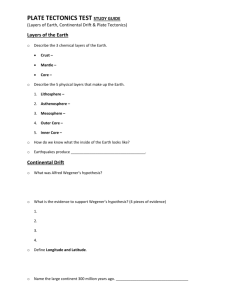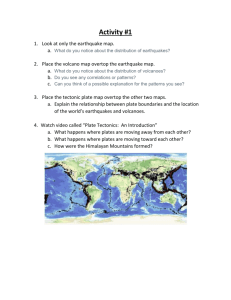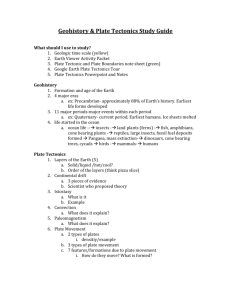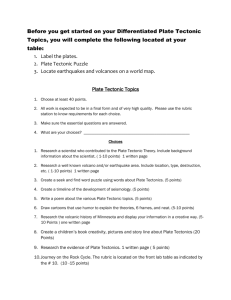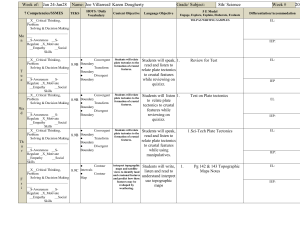LESSON: Plate Tectonics
advertisement
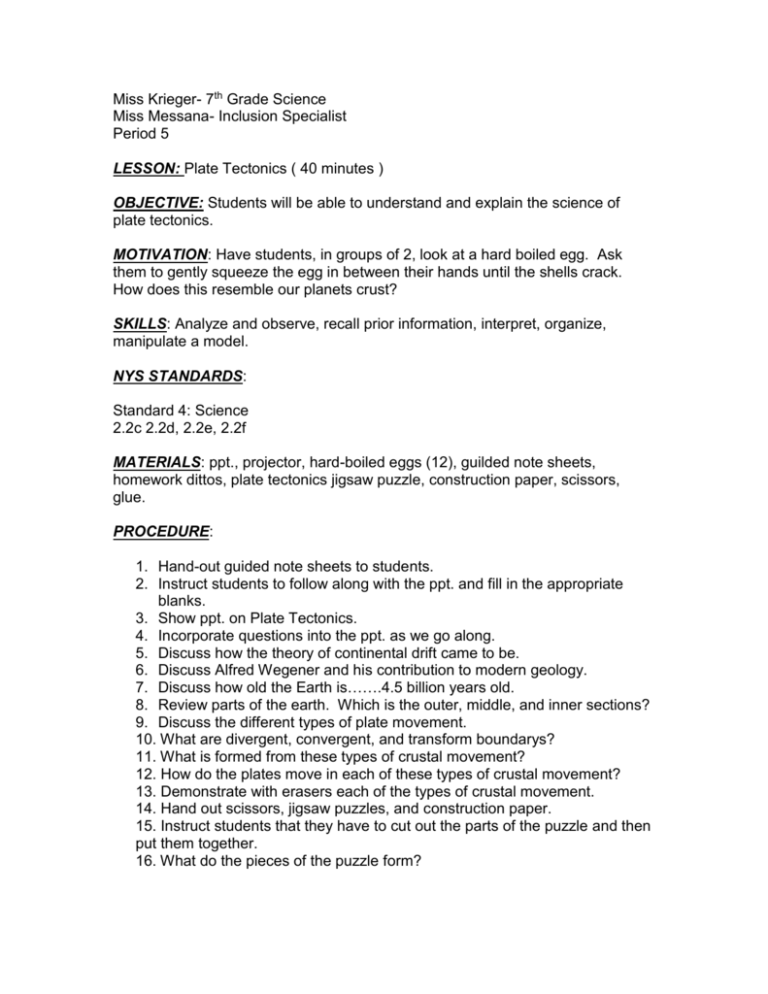
Miss Krieger- 7th Grade Science Miss Messana- Inclusion Specialist Period 5 LESSON: Plate Tectonics ( 40 minutes ) OBJECTIVE: Students will be able to understand and explain the science of plate tectonics. MOTIVATION: Have students, in groups of 2, look at a hard boiled egg. Ask them to gently squeeze the egg in between their hands until the shells crack. How does this resemble our planets crust? SKILLS: Analyze and observe, recall prior information, interpret, organize, manipulate a model. NYS STANDARDS: Standard 4: Science 2.2c 2.2d, 2.2e, 2.2f MATERIALS: ppt., projector, hard-boiled eggs (12), guilded note sheets, homework dittos, plate tectonics jigsaw puzzle, construction paper, scissors, glue. PROCEDURE: 1. Hand-out guided note sheets to students. 2. Instruct students to follow along with the ppt. and fill in the appropriate blanks. 3. Show ppt. on Plate Tectonics. 4. Incorporate questions into the ppt. as we go along. 5. Discuss how the theory of continental drift came to be. 6. Discuss Alfred Wegener and his contribution to modern geology. 7. Discuss how old the Earth is…….4.5 billion years old. 8. Review parts of the earth. Which is the outer, middle, and inner sections? 9. Discuss the different types of plate movement. 10. What are divergent, convergent, and transform boundarys? 11. What is formed from these types of crustal movement? 12. How do the plates move in each of these types of crustal movement? 13. Demonstrate with erasers each of the types of crustal movement. 14. Hand out scissors, jigsaw puzzles, and construction paper. 15. Instruct students that they have to cut out the parts of the puzzle and then put them together. 16. What do the pieces of the puzzle form? SUMMARY: 1. What is the name of the “supercontinent? 2. What is the name of the scientist that proposed the theory of continental drift? 3. What are the three types of plate boundarys? How do they move? HW: Vocabulary words given on ditto




